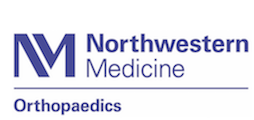|
|

|
« Back
Have you heard of the ProDisc-L replacement? It's the artificial disc replacement my surgeon is recommending for me. How does this one compare to any of the other ones?
|
|
There are several different types and designs of disc replacement units or devices on the market now. Each one strives to preserve motion, mimic the body's natural anatomy and function, and minimize or eliminate long-term side effects.
Artificial disc replacement is an acceptable (safe and effective) approach to the problem of degenerative disc disease many older people face. It is usually used at one level but has the potential to affect several levels on either side of it, possibly preventing breakdown at adjacent levels.
A successful result is defined by the Food and Drug Administration (FDA) as one that gives the patient at least a 15-point improvement in the Oswestry Disability Index (ODI). The ODI provides a measure of functional improvement that is so important for everyday activities. Other criteria set up by the FDA to look at success include: 1) no device failure, 2) no major complications, and 3) no neurologic changes.
Studies to date show similar results for the ProDisc-L compared with results published for other artificial disc replacement implants. Not all studies are conducted alike. Any differences can put barriers in the way of making direct comparisons. Then it becomes more a matter of comparing apples to oranges -- both are fruit (disc implant devices) but the rest of the study parameters differ too much to provide useful information.
In general, there is currently an 88 to 90.9 per cent satisfaction rate with ProDisc-L in the first few years. Patients do notice a decline in maintaining the good results as time goes by. In one study, by the end of five years, the 88 per cent success rate had declined to 71.4 per cent. Only 60 per cent of those patients said they would have the surgery again. There were no complications or adverse events in either group making it seem like the perceived success should be higher longer.
It's possible that the decline in improvements seen over time is typical of lumbar disc replacement surgery no matter who does the surgery and/or no matter which device is used. Further study is still needed to assess the long-term (10 years or more) results.
|
References:
|
|
|
« Back
|
|
|
|
*Disclaimer:*The information contained herein is compiled from a variety of sources. It may not be complete or timely. It does not cover all diseases, physical conditions, ailments or treatments. The information should NOT be used in place of visit with your healthcare provider, nor should you disregard the advice of your health care provider because of any information you read in this topic. |
 | All content provided by eORTHOPOD® is a registered trademark of Mosaic Medical Group, L.L.C.. Content is the sole property of Mosaic Medical Group, LLC and used herein by permission. |
|
